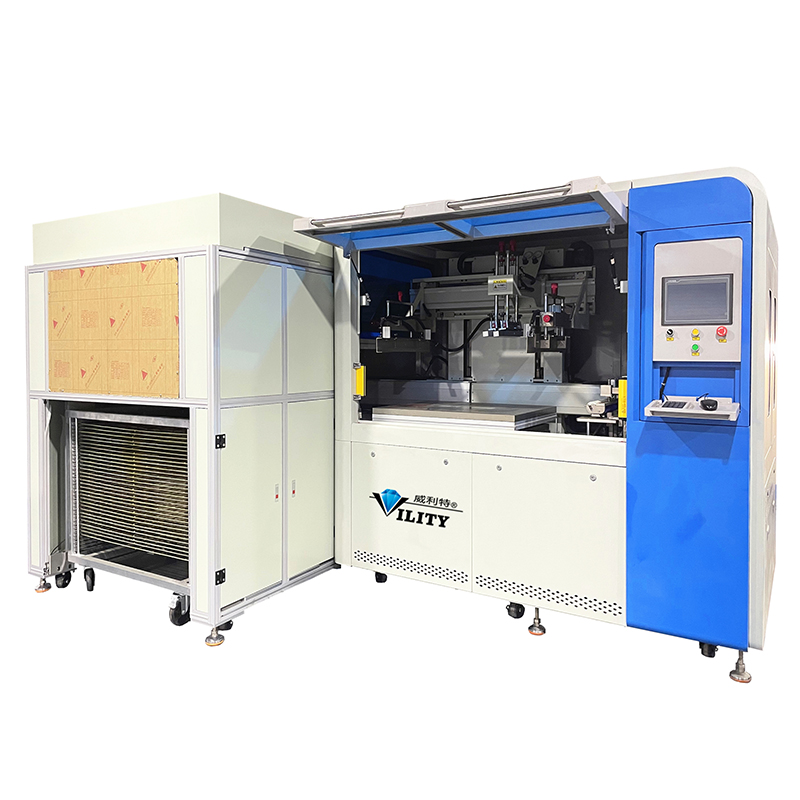완전 자동 스크린 인쇄 기계의 작동 원리
Working principle of fully automatic screen printing machine
The working principle of the fully automatic screen printing machine: Printing is carried out using the basic principle that the graphic part of the screen printing plate is permeable to ink, and the non-graphic part is impermeable to ink. When printing, pour ink onto one end of the screen printing plate, use a squeegee to apply a certain amount of pressure on the ink part of the screen printing plate, and at the same time move it toward the other end of the screen printing plate. The ink is squeezed by the scraper from the mesh of the graphic part onto the substrate during movement. Due to the viscosity of the ink, the imprint is fixed within a certain range. During the printing process, the scraper is always in line contact with the screen printing plate and the substrate. The contact line moves with the movement of the scraper. Since the screen printing plate and substrate A certain gap is maintained between them, so that the screen printing plate during printing generates a reaction force on the scraper through its own tension. This reaction force is called rebound force. Due to the effect of resilience, the screen printing plate and the substrate are only in moving line contact, while other parts of the screen printing plate are separated from the substrate. It causes the ink and screen to break apart, ensuring the printing dimensional accuracy and avoiding smearing of the substrate. When the scraper scrapes across the entire page and then lifts up, the screen printing plate also lifts up and gently scrapes the ink back to its original position. This is a printing stroke.
The working cycle program of the flat screen flat screen printing machine
takes the flat screen platform type monochrome semi-automatic hand screen printing machine as an example. One of its working cycles is:
feeding parts → positioning → printing → Lower the squeegee, raise the ink return plate → Squeegee stroke → Raise the squeegee → Lower the ink return plate → Lift the plate → Return ink stroke → Release positioning → Receiving.
In the continuous cycle action, as long as the function can be realized, the time occupied by each action should be as short as possible to shorten the period of each work cycle and improve the work efficiency.
Embossing line. During the printing stroke, the squeegee squeezes the ink and the screen printing plate, so that the screen printing plate and the substrate form a contact line, which is called a nip line. This line is at the edge of the squeegee, and countless embossed lines form the printing surface. Achieving an ideal nip line is difficult because the printing stroke is a dynamic process.
 스크린 인쇄기
스크린 인쇄기
